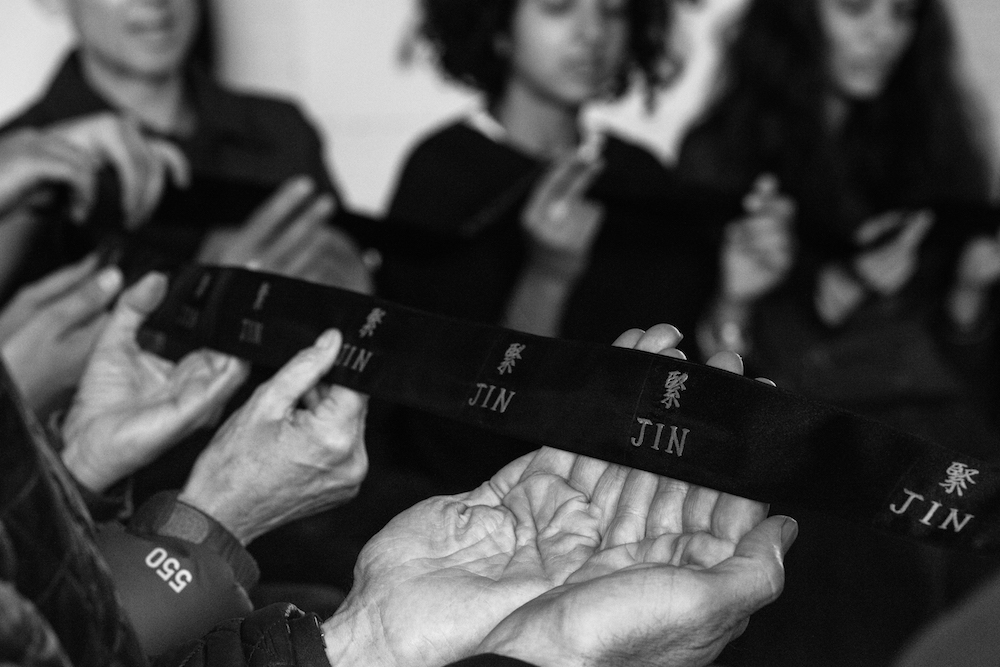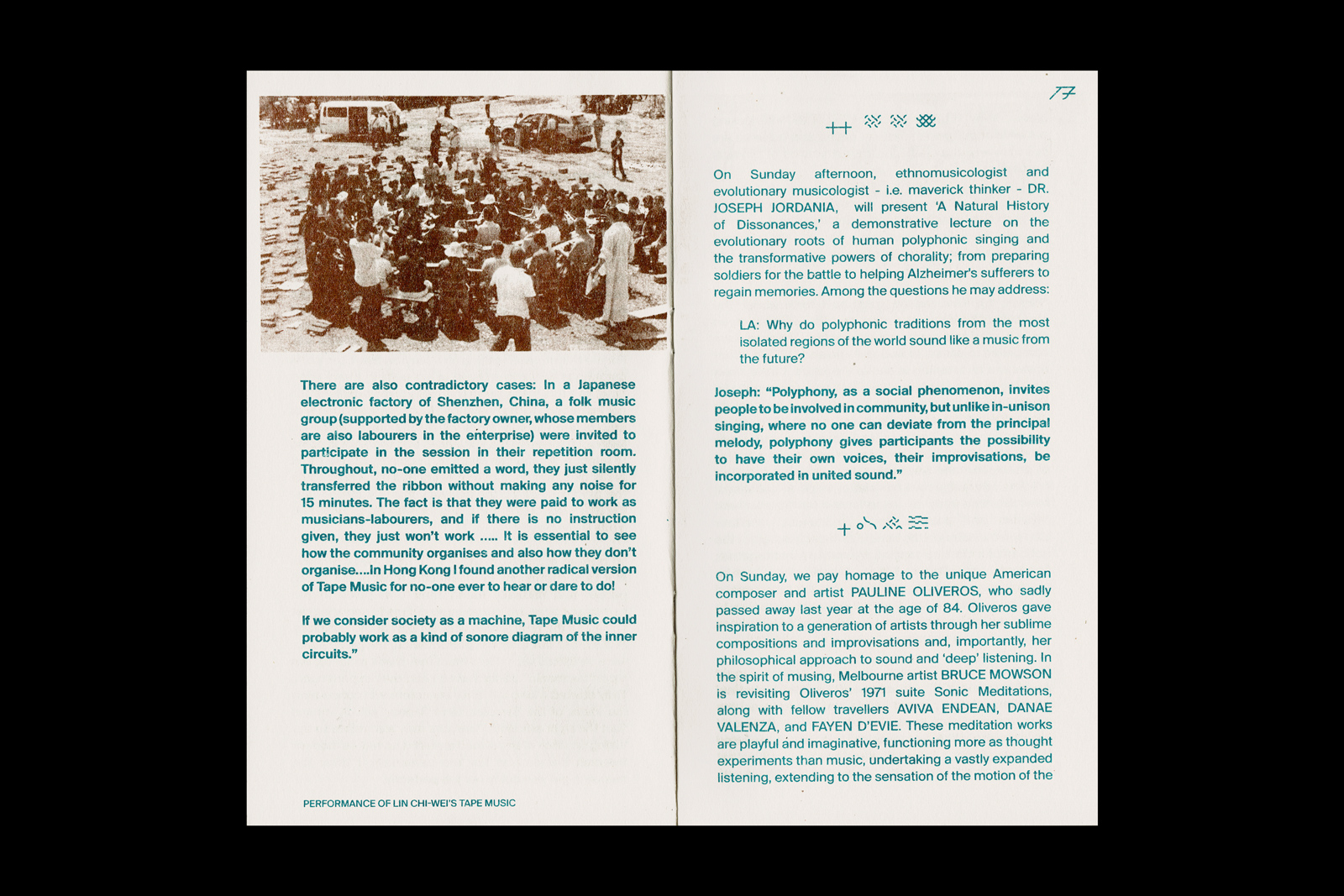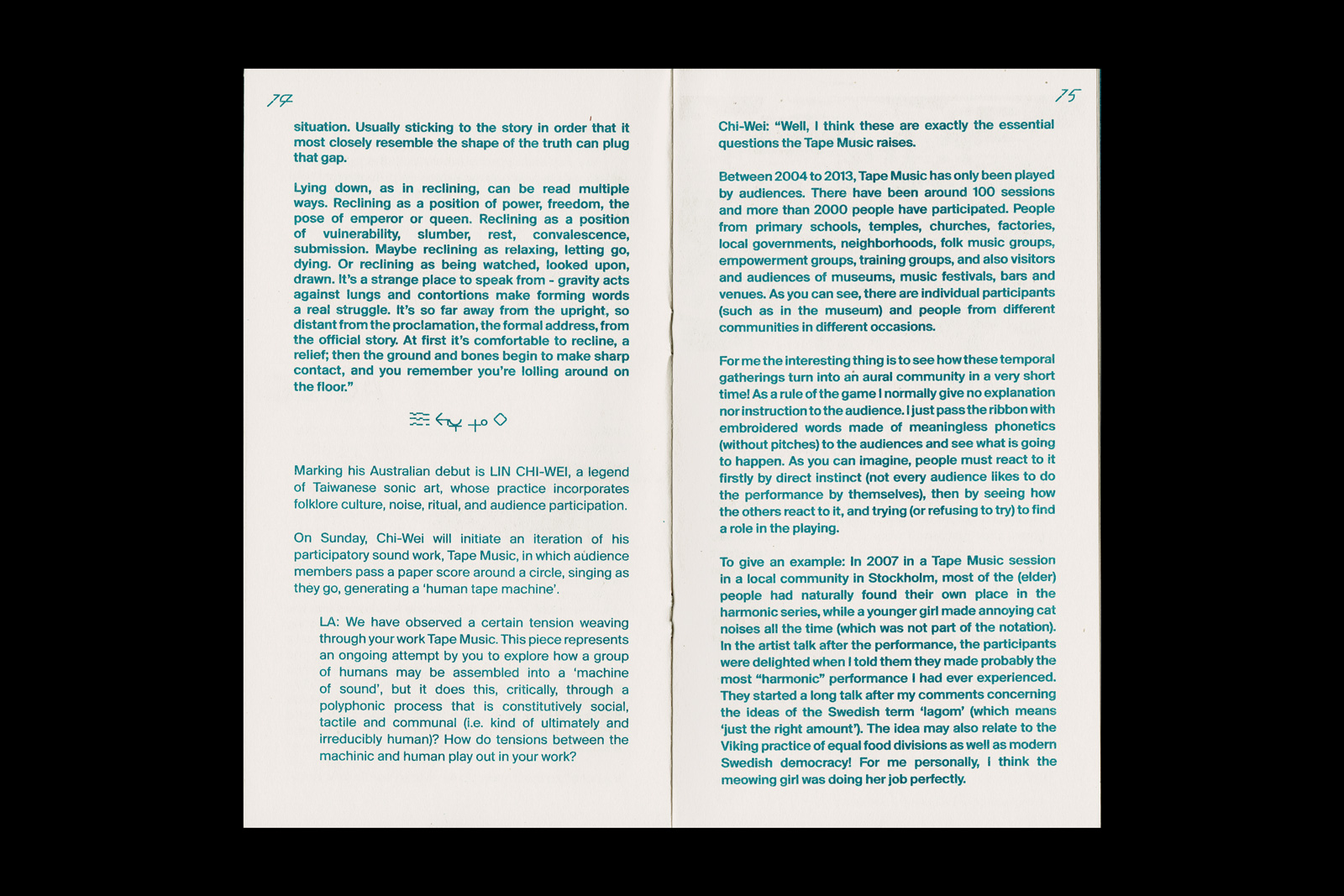
Lin Chi-Wei: Tape Music
67-71 Johnston St
Collingwood
VIC
FREE
Lin Chi-Wei is a legend of Taiwanese sonic art, whose practice incorporates folklore culture, noise, ritual, and audience participation. He is a founding member of Zero and Sound Liberation Organization, pioneering groups for experimental music in Taiwan, and in 2012 published Beyond Sound Art: The Avant Garde, Sound Machine and the Modernity of Hearing, which analyses the aesthetic condition of sound and art in a post-colonial East Asian context.
At Collingwood Art Precinct, Chi-Wei will initiate an iteration of his participatory sound work, Tape Music, in which vocal volunteers pass a ribbon score containing 666 words from hand to hand, reading and vocally responding as the ribbon passes, becoming a ‘human tape machine’.

LA: We have observed a certain tension weaving through your work Tape Music. This piece represents an ongoing attempt by you to explore how a group of humans may be assembled into a ‘machine of sound’, but it does this, critically, through a polyphonic process that is constitutively social, tactile and communal (i.e. kind of ultimately and irreducibly human)? How do tensions between the machinic and human play out in your work?
“Well, I think these are exactly the essential questions the Tape Music raises.
Between 2004 to 2013, Tape Music has only been played by audiences. There have been around 100 sessions and more than 2000 people have participated. People from primary schools, temples, churches, factories, local governments, neighborhoods, folk music groups, empowerment groups, training groups, and also visitors and audiences of museums, music festivals, bars and venues. As you can see, there are individual participants (such as in the museum) and people from different communities in different occasions.
For me the interesting thing is to see how these temporal gatherings turn into an aural community in a very short time! As a rule of the game I normally give no explanation nor instruction to the audience. I just pass the ribbon with embroidered words made of meaningless phonetics (without pitches) to the audiences and see what is going to happen. As you can imagine, people must react to it firstly by direct instinct (not every audience likes to do the performance by themselves), then by seeing how the others react to it, and trying (or refusing to try) to find a role in the playing.
To give an example: In 2007 in a Tape Music session in a local community in Stockholm, most of the (elder) people had naturally found their own place in the harmonic series, while a younger girl made annoying cat noises all the time (which was not part of the notation). In the artist talk after the performance, the participants were delighted when I told them they made probably the most “harmonic” performance I had ever experienced. They started a long talk after my comments concerning the ideas of the Swedish term lagom (which means ‘just the right amount’). The idea may also relate to the Viking practice of equal food divisions as well as modern Swedish democracy! For me personally, I think the meowing girl was doing her job perfectly.
There are also contradictory cases: In a Japanese electronic factory of Shenzhen, China, a folk music group (supported by the factory owner, whose members are also labourers in the enterprise) were invited to participate in the session in their repetition room. Throughout, no-one emitted a word, they just silently transferred the ribbon without making any noise for 15 minutes. The fact is that they were paid to work as musicians-labourers, and if there is no instruction given, they just won’t work ….. It is essential to see how the community organises and also how they don’t organise….In Hong Kong I found another radical version of Tape Music for no-one ever to hear or dare to do!
If we consider society as a machine, Tape Music could probably work as a kind of sonore diagram of the inner circuits.”



Print material designed by U-P

